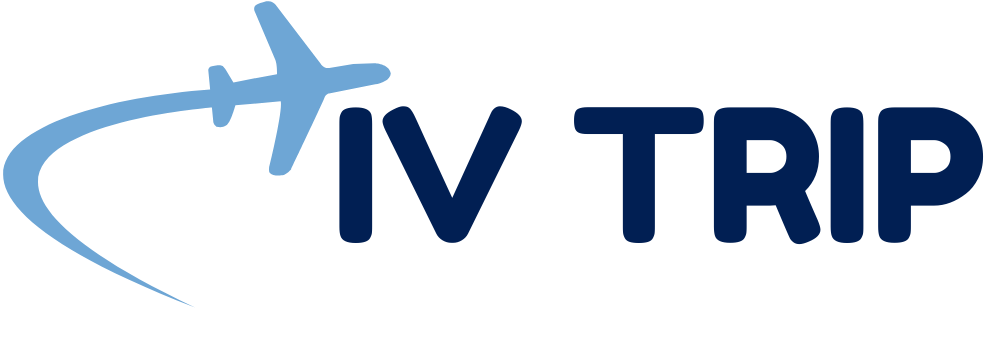Turkish Airlines: History, Fleet, and Safety Record
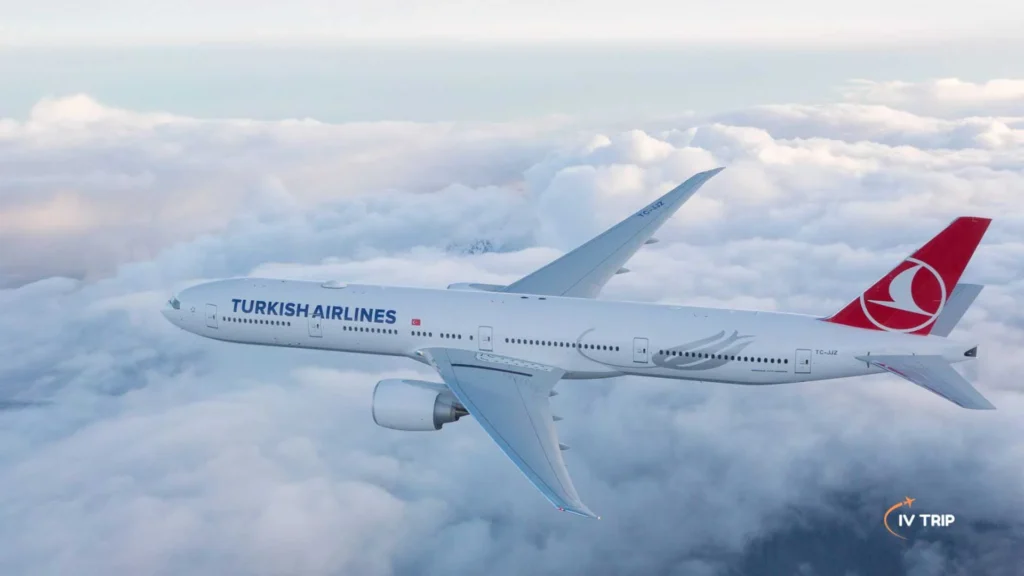
Turkish Airlines
The Turkish flag carrier is Turkish Airlines (Turkish: Türk Hava Yolları Anonim Ortaklığı). With 340 planned destinations in Europe, Asia, Africa, and the Americas as of 2022, it is the world’s largest mainline carrier by passenger destinations. It flies to 126 countries and provides more nonstop destinations from a single airport than any other airline. Turkish Cargo covers 82 destinations with 24 cargo planes. The airline runs AnadoluJet, a budget airline.
Istanbul Atatürk Airport is the location of the airline’s corporate headquarters, and its hub is Istanbul Airport. Since April 1, 2008, it has been a Star Alliance member.
History of Turkish Airlines
Early years
Turkish Airlines was founded on May 20, 1933, as Turkish State Airlines (Devlet Hava Yolları), which was a division under the Ministry of National Defense. The fleet initially comprised two five-seat Curtiss Kingbirds, two four-seat Junkers F-13s, and one ten-seat Tupolev ANT-9. The airline was transferred to the Ministry of Public Works in 1935 and renamed the General Directorate of State Airlines. After three years, it joined the Ministry of Transportation in 1938.
Postwar period
Several DC-3s and C-47s were introduced in 1945. The airline began international flights with Ankara–Istanbul–Athens in 1947, using DC-3s and C-47s to expand its network.
The airline adds Nicosia, Beirut, and Cairo to its international flights. The carrier’s primary concentration was domestic services until the early 1960s.
The Turkish government renamed the airline Türk Hava Yolları A.O. (THY) in 1956. It had TRY 60 million in capital. The airline soon joined IATA. British Overseas Airways Corporation (BOAC) acquired 6.5 percent ownership in 1957 and provided technical support for 20 years.
Vickers Viscounts, Fokker F27s, and Douglas DC-3s were added to the fleet during the late 1950s and early 1960s. In 1967, Turkish Airlines operated its first McDonnell Douglas DC-9. Three Boeing 707s were added in 1971. Introduced in the early 1970s, the McDonnell Douglas DC-10 and Fokker F28 were famous aircraft.
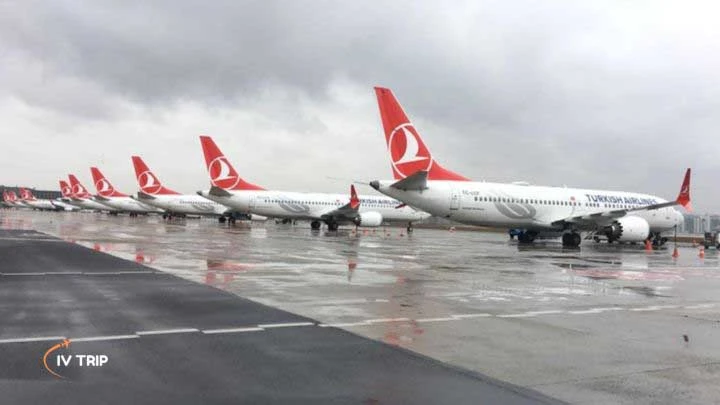
Turkish Airlines: The 1980s and 1990s
Many troubles afflicted the airline in the 1980s and 1990s. With 47 out of 100 flights late, it was known for poor service and flight delays. From 1974 to 1983, it had seven accidents and hijackings. Turkish Airlines Flight 981’s 1974 disaster in Ermenonville, France, killed 346 people due to a design issue in the cargo door.
The airline’s modernization began in 1983 when a new administration recognized THY’s importance as Turkey’s gateway to the world. That fleet was one of the youngest in the world. Security was increased, prompting one shipper to compare it to Israel’s El Al in terms of delays.
THY developed a modern technical center at Yeşilköy Airport in 1984. The airline could do minor and extensive repairs on several aircraft categories. According to Air Transport World, 25% of the airline’s 6,000 personnel were technical. Since it was a state economic business, its capital was boosted to 60 billion TL in 1984. Three years later, 150 billion T.L. was raised.
THY had 30 planes by the mid-1980s. Traveling to 16 local and 30 overseas destinations, it carried three million people annually. Airlines were Turkey’s most significant foreign money source. Flights to Singapore commenced in 1986 after Turkish Airlines began flying Airbus A310s in 1985. A 1987 Brussels-New York City service was added.
Air Transport World reported losses in 1987 and 1988 owing to excessive payments on its dozen new Airbus A310s. The fleet includes 11 Boeing 727s and 9 Douglas DC-9s. The decade we concluded with 8,500 THY workers.
In 1990, the airline bought five Airbus A340s with an option for five more to fly nonstop between North America and East Asia. Three years later, the first A340 arrived in 1993.
After the Persian Gulf War, the global aviation crisis held the corporation back until 1994. The mid-1990s saw sales increase again, with North American destinations leading.
The business raised 10 trillion TL in 1995. Also that year, the airline converted three Boeing 727s into freighters. DC-9s were sold. This year, the firm earned $6 million on $1 billion in sales. While successful, Turkey’s high inflation made capital upgrades challenging for THY.
Charter Airlines competed in the domestic market after deregulation in 1996. On Western European routes, major multinational carriers competed fiercely. THY and other foreign airlines signed marketing agreements to boost competition. In 1997 and 1998, it served Osaka and Tokyo with Japan Airlines. Austrian Airlines, Swissair, and Croatia Airlines quickly continued combined flights. As its second U.S. destination, THY began flying to Chicago in 1997.
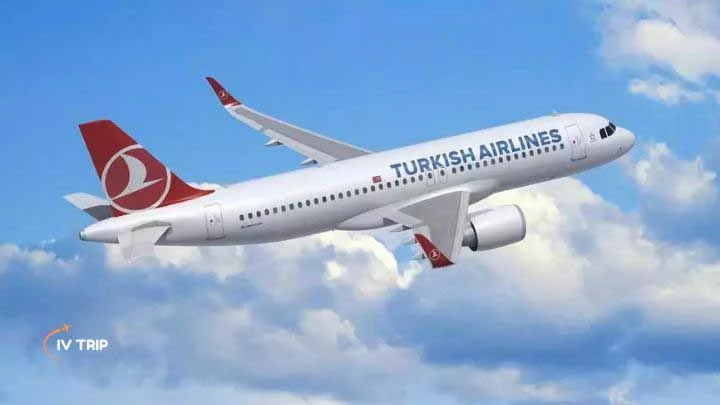
Turkish Airlines: 21st-century
Istanbul Atatürk Airport constructed a new terminal in January 2000. Turkish Airlines launched marketing partnerships with Asiana Airlines, American Airlines, Malaysia Airlines, LOT Polish Airlines, Czech Airlines, and Cathay Pacific in 2000.
On October 29, 2000, THY left the Swissair-led Qualiflyer partnership to find a strategic investor for privatization. The airline joined the alliance’s frequent-flyer program in November 1998. Code-sharing with Sun Express established an Antalya-Frankfurt route in 2001.
Through much of 2001, Turkey’s economic crisis reduced domestic travel. Despite 300 middle management roles being lost, 400 part-timers being thrown off, and 10% salary cuts, THY survived the September 11 attacks without a government bailout or mass layoffs. According to the Turkish Daily News, entrepreneurial management quickly eliminated loss-making routes at home and overseas, saving the airline.
Turkish Airlines stopped Asian flights during the SARS pandemic and closed specific Persian Gulf routes in 2003 due to the Iraq conflict. But the airline rebounded, boosting traffic on existing flights and adding Delhi service after 11 years.
In 2004, THY began another fleet expansion program to keep its fleet youthful. The airline ordered 36 Airbus planes and 15 Boeing 737s for $2.8 billion in July.
Not only did THY order planes, but New technical and training facilities at Istanbul’s underutilized Sabiha Gökçen International Airport were to cost $350 million. The airline had a significant technical services business that maintained its own and third-party aircraft. Turkish Technic has 2,700 employees and has promised 2,000 more by 2010. THY has three flight simulators for training.
The liberalizing Turkish aviation industry brought new competition to the airline. Tourism was rising, with 20 million visitors predicted in 2005 compared to 12 million in 2003. THY sold its 50% stake in Cyprus Turkish Airlines in 2005.
While publicly listed, the government-controlled 98% of the company’s shares. In 2004, 20% of shares were listed on the Istanbul Stock Exchange, restarting the privatization program. After raising $170 million, the Turkish government acquired 75% of the shares. THY has 50.88% publicly traded shares and 49.12% owned by the Turkey Wealth Fund.
After an 18-month integration procedure starting in December 2006, Turkish Airlines became the eighth European airline in the 20-member Star Alliance on April 1, 2008.
In December 2011, the Turkish government announced intentions to modernize Mogadishu’s Aden Adde International Airport, one of the carrier’s newest flying destinations in 2012. Turkey is involved in local post-conflict reconstruction through the restoration project. Airport infrastructure, including a modern airspace control tower, will be renovated. Turkish Airlines resumed flights to Somalia in March 2012, the first foreign airline since the early 1990s civil conflict.
Turkish Airlines went to 241 destinations (199 international and 42 local) in 2013. As a secondary hub, the airline increased operations at Istanbul Sabiha Gökçen International Airport.
In response to the 2016 Turkish coup d’état, the FAA temporarily barred Turkey-US flights. Turkish Airlines’ strategy of one-stop flights between the U.S. and remote African, Middle Eastern, and Indian destinations proved particularly problematic. After a three-day gap, Turkish Airlines resumed U.S. flights on July 19 once this embargo was removed.
Turkish Airlines reported a second-quarter loss of 198 million euros and a global loss of 10 million passengers in August 2016. The airline plans to drop the frequency of 45 European and 13 intercontinental flights in 2016–2017. Turkish Airlines’ first-half 2016 deficit was 1.9 billion Turkish Lira ($644.4 million), a record.
In 2017, the airline’s turnover rose by over 35%, and profitability returned.
The airline declared in 2020 that it would hand over international routes from Sabiha Gökçen Airport to AnadoluJet.
Turkish Cargo, the airline’s freight business, moved all cargo flights and operations to Istanbul Airport in February 2022. In February 2023, Turkish Airlines announced its intentions to spin off AnadoluJet.
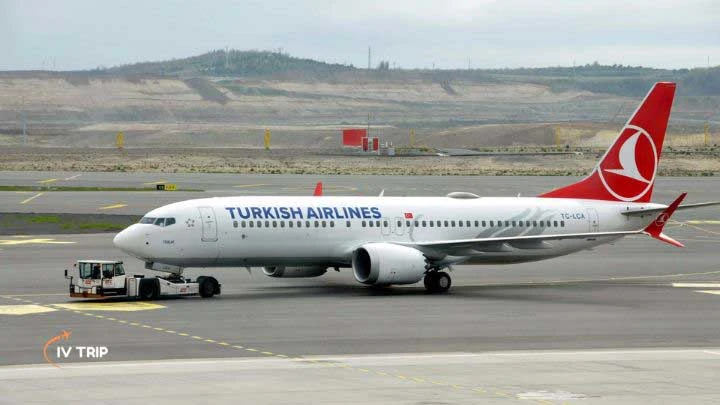
Turkish Airlines: Fleet
In March 2023, Turkish Airlines had 400 aircraft, including 13 passenger types. With five aircraft in 1933, the airline increased to 52 in 1945 after adding WWII Douglas DC-3s. This made Turkish Airlines the largest Middle Eastern carrier. In 1967, the airline acquired its first jet-engined Douglas DC-9. Wide-body Douglas DC-10s debuted in 1972. With the first Airbus A310 and Airbus A340 deliveries in the late 1980s, the airline changed its fleet evolution. Early Boeing 737s arrived years later.
The airline purchased about 50 Boeing and Airbus planes in 2004. Three 2008 Boeing 777-300s were leased, and Boeing supplied 12 more. In 2013, the airline purchased over 200 jets. In March 2018, the airline bought 25 Boeing 787-9 and Airbus A350-900s for 2019 and 2020 delivery.
The airline stated on May 11, 2023, that it would buy 600 new planes over the next ten years. Chairman of the Board of Directors and Executive Committee Ahmet Bolat stated most of the aircraft will be from Airbus and Boeing, with others from “another manufacturer.”.
Frequent-flyer program
Turkish Airlines launched Miles & Smiles in 2000 after leaving Qualiflyer. All-Star Alliance flights and Turkish Airlines flights accept earned points. Classic Plus Miles & Smiles members receive Star Alliance Silver perks, while Elite and Elite Plus members receive Gold advantages.
Miles & Smiles Credit Card
Frequent flyer members receive miles while using their Miles & Smiles credit card. Local banks in Turkey, Israel, Azerbaijan, and Jordan provide Miles & Smiles credit cards. American Express, Visa, Mastercard, and Isracard are credit card types. Specific banks in the Americas, Asia, and Oceania provide mile-earning and spending programs.
Turkish Airlines Corporate Club
Turkish Airlines Corporate Club suits corporations. Easy business travel with particular privileges is available to Club members. UATP membership includes the Corporate Club.
Sponsorship and promotion agreements
Turkish Airlines flies Galatasaray, Manchester United, FC Barcelona, Borussia Dortmund, Olympique de Marseille, Aston Villa, FK Sarajevo, and Hannover 96.
The airline also supports Lionel Messi, Kobe Bryant, Caroline Wozniacki, Kevin Costner, Wayne Rooney, and Didier Drogba. Since 2010, the corporation has sponsored the Turkish Airlines EuroLeague and the 2010 FIBA World Championship. On October 22, 2013, Turkish Airlines and Euroleague extended their sponsorship partnership until 2020.
Turkish Airlines has sponsored the European Tour golf tournament, the Turkish Airlines Open, since 2013. F.K. Sarajevo and Galatasaray’s 2014–15 UEFA Champions League shirt sponsor was Turkish Airlines. After that, the airline sponsored Galatasaray and other Turkish teams’ European kits, including Trabzonspor and Başakşehir.
On December 10, 2015, Turkish Airlines became the first airline sponsor of UEFA European Championship competitions with a sponsorship contract for Euro 2016.
Turkish Airlines confirmed their sponsorship of Batman vs. Superman: Dawn of Justice with Warner Bros. on January 29, 2016. A crucial sequence takes place on a Turkish Airlines A330 in the film. The airline and other Turkish tourism businesses that year produced the romantic comedy Non-Transferable.
On September 14, 2018, Turkish Airlines became an official sponsor of Lega Basket Serie A, Italy’s premier professional basketball league, for the 2018–19 season. Turkish Airlines sponsored Drogheda United in the League of Ireland First Division in February 2019.
Turkish Airlines signed a three-year sponsorship deal with Club Atlético River Plate in August 2019. Turkish Airlines became the worldwide sponsor of the UEFA Champions League, Super Cup, Youth League, and Futsal Champions League before the 2022–23 season, when UEFA agreed to sponsor for the following two seasons.
Turkish Airlines Maintenance Center
Turkish Technic, founded in 2006, maintains Turkish Airlines and third-party aircraft at eight hangars. APU, landing gear, airframe, and subsystems are capabilities. Turkish Technic and Pratt & Whitney opened TEC (Turkish Engine Centre) at Sabiha Gökçen International Airport in January 2010. Customers worldwide use the engine MRO facility.
Two hangars house Turkish Technic at Istanbul Atatürk Airport. It purchased MNG Technic and its hangars, then built two additional hangars to transfer the main complex to SAW. Additionally, Ankara Esenboğa Airport has two smaller hangars. The new Istanbul Airport is adding hangars for the operator’s increasing fleet.
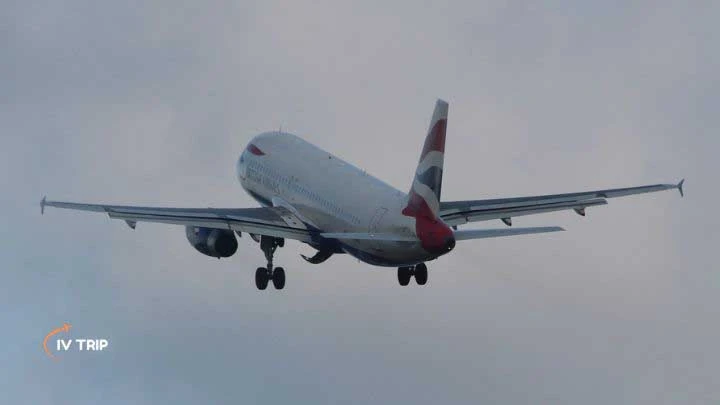
Turkish Airlines Incidents and accidents
Turkish Airlines had 19 incidents and accidents, 15 of which were deadly. 68 crew, 835 passengers, and 35 ground people died.
- A Vickers Viscount Type 793, registration TC-SEV, transporting Turkish Prime Minister Adnan Menderes and a government team to London for the London-Zürich Agreements crashed in intense fog on approach to London Gatwick Airport on February 17, 1959. They lost nine of sixteen passengers and five of eight staff. Aeroplane backseat passenger Adnan Menderes survived the crash.
- Flight 835, TC-TAY, a Fokker F27-100, crashed near Karanlıktepe, Ankara Province, on September 23, 1961, en route to Esenboğa Airport. 24 of the 25 passengers and all four crew members died.
- A Fairchild F-27, TC-KOP, crashed into the Taurus Mountains just before reaching Adana Şakirpaşa Airport on March 8, 1962. All three crew members and eight passengers died.
- During a domestic freight flight on February 3, 1964, TC-ETI, a Douglas C-47, collided with terrain near Esenboğa Airport in Ankara. Three crew members died.
- TC-SET, a Vickers Viscount Type 794, crashed on approach at Esenboğa Airport on February 2, 1969. No one died.
- Following departure from Izmir Cumaovası Airport on January 26, 1974, Turkish Airlines Flight 301, TC-JAO, crashed due to atmospheric icing on the wings. Four crew members and 62 passengers died when the plane crashed and caught fire.
- Turkish Airlines Flight 981, TC-JAV, a McDonnell Douglas DC-10, crashed into Ermenonville Forest, Fontaine-Chaalis, Oise, France, on March 3, 1974, killing 335 passengers and 11 crew. Due to a design flaw in the McDonnell Douglas DC-10’s cargo doors, the aircraft’s door-locking system failed, opening one door in flight.
- On January 30, 1975, Turkish Airlines Flight 345, TC-JAP, crashed into the Sea of Marmara during the final approach to Istanbul Yeşilköy Airport. The plane’s four crew members and 38 passengers died.
- On September 19, 1976, TC-JBH, a Boeing 727-200, piloted Turkish Airlines Flight 452 from Istanbul Yeşilköy Airport to Antalya Airport into challenging terrain in the Karatepe Mountains. All eight crew members and 146 passengers died in the crash.
- Flight TC-JAT, a Fokker F28-1000 from Samsun-Çarşamba Airport to Esenboğa Airport, crashed into a hill near Kuyumcuköy village, Çubuk, Ankara, 32 kilometers (20 mi) northeast of its target airport on December 23, 1979, during heavy turbulence. Three crew members and 38 passengers died.
- On January 16, 1983, Turkish Airlines Flight 158, TC-JBR, a Boeing 727-200, crashed 50 m short of the runway at Esenboğa Airport in snow, causing a breakup and fire. The seven crew members survived, while 47 of the 60 passengers died.
- In heavy snow, Turkish Airlines Flight 278, TC-JES, crashed on its final approach to Van Ferit Melen Airport on December 29, 1994. Five crew members and 52 passengers died.
- Turkish Airlines Flight 5904, TC-JEP, a Boeing 737-400 while repositioning, crashed in Ceyhan, Adana, shortly after takeoff from Adana Şakirpaşa Airport on April 7, 1999. All six crew members died in the crash, which had no passengers.
- On January 8, 2003, Turkish Airlines Flight 634, TC-THG, crashed near Diyarbakır Airport in Turkey. All five crew members and 70 passengers died.
- Turkish national Hakan Ekinci hijacked Turkish Airlines Flight 1476 from Tirana to Istanbul in Greek airspace on October 3, 2006. After a forced landing in Brindisi, Italy, the hijacker surrendered.
- On February 25, 2009, Turkish Airlines Flight 1951, TC-JGE, a Boeing 737-800 with 128 passengers and seven crew members, crashed during the final approach to Amsterdam Airport Schiphol. The incorrect radar altimeter forced the aircraft to throttle the engines back to idle, and the crew failed to respond, causing an unrecoverable stall and crash. Nine passengers, including the three pilots, died on the 135-person flight. Hospitals received 86 additional patients.
- At Kathmandu’s Tribhuvan International Airport on March 3, 2015, Turkish Airlines Flight 726 took off. After its nose gear fell, TC-JOC’s Airbus A330-300 fuselage and wings were severely damaged. No one was hurt, including 227 passengers and 11 staff. The aircraft was scrapped.
- An Airbus A320-200 TC-JPE landing mishap at Istanbul Atatürk Airport on April 25, 2015, severely damaged Turkish Airlines Flight 1878. No one was injured during the evacuation.
- In Bishkek, Kyrgyzstan, Turkish Airlines Flight 6491, a Boeing 747-412F on wet lease from ACT Airlines, crashed into a residential area on January 16, 2017, killing all four crew members and leaving 35 on the ground. Turkish Airlines responded on Twitter that the jet and crew were not theirs, calling it an “ACT Airlines accident.” Turkish Airlines operated the flight under a Turkish Airlines flight number, making it an IATA flight.
- Turkish Airlines Flight 467, a Boeing 737-800, went down in high crosswinds at Odesa International Airport in Ukraine on November 21, 2019. Emergency slides deplaned everyone safely. In 2020, TC-JGZ was scrapped as a hull loss.
We are pleased to provide IV Trip, one of the best tools available to travel agents. where you may find extra thrilling elements in addition to the standard functions that each travel agent tool needs to have.
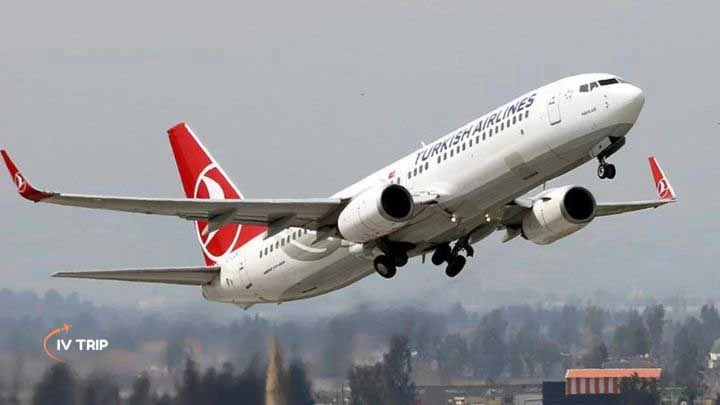
FAQs about Turkish Airlines
Q: What is the history of Turkish Airlines?
A: Since 1933, Turkish State Airlines has grown into one of the world’s major airlines. Before becoming Turkish Airlines (THY) in 1956, it operated under numerous government departments. It has helped Turkey’s aviation sector through obstacles and accomplishments.
Q: What are some notable milestones in Turkish Airlines’ history?
A: Turkish Airlines has evolved and expanded. In 2008, it joined the Star Alliance, modernized Mogadishu’s Aden Adde International Airport in 2012, and sponsored and promoted sports teams, athletes, and entertainment properties.
Q: What is the current size and scope of Turkish Airlines’ fleet?
A: As of March 2023, Turkish Airlines has 400 passenger aircraft. Strategic purchases and orders from Boeing and Airbus have grown its fleet, demonstrating its commitment to modernization and expansion.
Q: What’s in Turkish Airlines’ Miles & Smiles program?
A: Turkish Airlines’ 2000 Miles & Smiles program lets travelers earn and redeem points on Star Alliance flights. Each membership grade offers loyal consumers various privileges and rewards.
Q: What are the Turkish Airlines Corporate Club benefits?
A: The Turkish Airlines Corporate Club offers corporate travelers exclusive perks for business travel. The Corporate Club offers corporate travel privileges, including UATP membership.
Q: What are some sponsorship and promotion agreements Turkish Airlines has made?
A: Turkish Airlines works with athletes, sports teams, and entertainment assets worldwide. It sponsors Lionel Messi, Kobe Bryant, Manchester United, F.C. Barcelona, and Galatasaray.
Q: How does the Turkish Airlines Maintenance Center, especially Turkish Technic, perform?
A: In several hangars and facilities, Turkish Technic has maintained Turkish Airlines’ fleet and third-party aircraft since 2006. APU, landing gear, airframe, and subsystem repair are available. It also maintains engines with Pratt & Whitney through the Turkish Engine Center.
Q: What accidents have involved Turkish Airlines?
A: The Airlines has had multiple deadly accidents. Hijackings, crashes, and operational errors are examples. Though the airline has improved safety and security, these occurrences show the perils of flying.
Q: How has Turkish Airlines handled economic troubles and geopolitical conflicts?
A: The Airlines used route changes, fleet expansions, and cost-cutting to overcome economic downturns and geopolitical concerns. Despite challenges, the airline has continued operations and served customers.
Q: What are Turkish Airlines’ plans for the future?
A: The Airlines wants to extend its fleet, improve its services, and seek new business prospects. To preserve its worldwide leadership, the airline prioritizes safety, sustainability, and customer pleasure.
